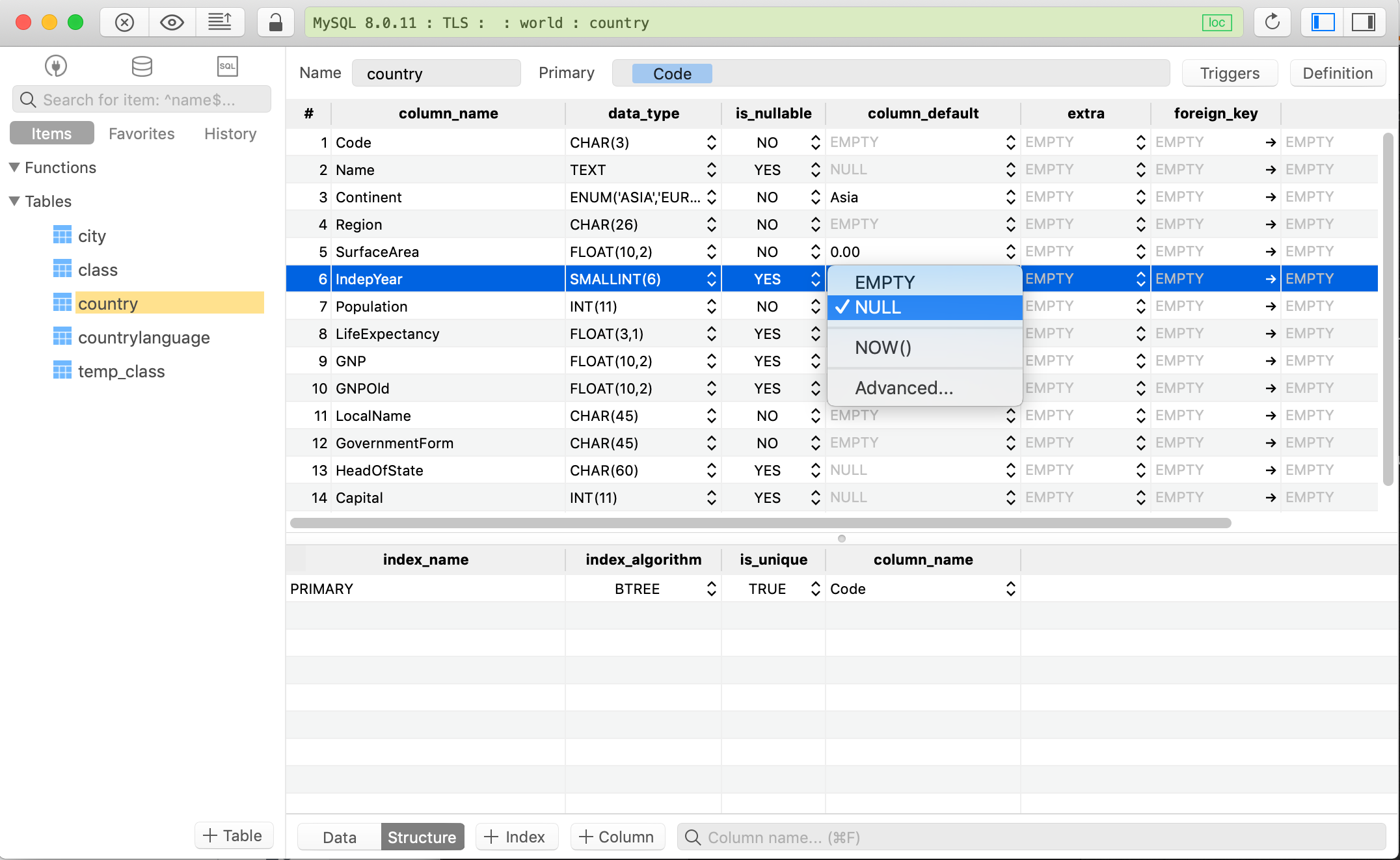

It returns list of all constrains for all columns within table. List all existing default value constraints for columns.Įxecute this system database procedure, it takes table name as a parameter.And after that default value can be set for a particular column. First, you specify the table name after the ALTER.
Mysql add column to existing table with default value code#
So to change the default value we need to delete the existing system generated or user generated default constraint. To add a new column to an existing table, you use the ALTER TABLE ADD COLUMN statement as follows: ALTER TABLE table ADD COLUMN columnname columndefinition FIRST AFTER existingcolumn Code language: SQL (Structured Query Language) (sql) Let’s examine the statement in more detail. In this case my SQL server does not allow to modify existing default constraint value. Modify existing column for a existing table.At the time of creating table / creating new column.Ĭolumn_name datatype default 'any default value'.Var dbSets = typeof(DatabaseContext).GetProperties().Where(p => p.().Contains("dbset")).There are two scenarios where default value for a column could be changed, Read all properties in DatabaseContext, that are of type DbSet List types = asm.GetTypes().Where(p => p.Namespace = nameSpace).ToList() Read all types in the assembly Ik.Shared, that are in the namespace Ik.Shared.Entities Private void OnModelCreatingAddDefaultSqlValues(ModelBuilder mb) Uncomment this line, if you want to see what is happening when you fire Add-Migration

Protected override void OnModelCreating(ModelBuilder mb) If the column already existed, no records would be modified. The new column, if added, will populate existing records with the default value, which in this case is a BIT value of 1. Step 4 - Add this code your DbContext (you have to change it to your needs.) It assumes, that all relevant data classes live in one certain assembly and one certain namespace. This will add a new column, Is4WheelDrive, to the table dbo.Trucks if that column doesnt exist.Step 3 - Add your classes to the DbContext.String q = $"select column_name, column_default from information_lumns where column_default is not null and table_schema not in ('information_schema', 'sys', 'performance_schema', 'mysql') and table_name = ' = DateTime.UtcNow String table_name = entity.GetType().Name public static bool GetDBDefaults(object entity) Take into account, that due to database_schema access it is not the fastest and also you need to have same entity name as table name (or rewrite it somehow). Sure, there are thing that has to be improved or added, but for now it is enough for our using, enjoy. note here, in the Down method, I'll restore to the old defaultValue:įor those, who don't want to use computed and rewrite it after every db update, I wrote extension method for database partial class. Protected override void Down(MigrationBuilder migrationBuilder) note here, in the Up method, I'm specifying a new defaultValue: Protected override void Up(MigrationBuilder migrationBuilder) Here's an example: public partial class RemovingDefaultToZeroPlantIdManualChange : Migration HasDefaultValueSql("NULL") Īnd you can also use the Migrations Up and Down methods, you can alter the defaultValue or defaultValueSql but you may need to drop Indexes first. Note, there is also HasDefaultValueSql for NULL case. There is still no Data-Attribute in EF Core.Īnd you must still use the Fluent API it does have a HasDefaultValue protected override void OnModelCreating(ModelBuilder modelBuilder) That is the key to get the computation workingĪccepted answer is correct for EF6, I'm only adding EF Core solution (also my solution focuses on changing the default-value, rather than creating it properly the first time) You will notice the defaultValueSql function. You commonly combine this command with ADD, DROP, and MODIFY statements to execute specific operations on. Id = c.Int(nullable: false, identity: true),Ĭreated = c.DateTime(nullable: false, defaultValueSql: "GetDate()"), In MySQL, you use the ALTER TABLE command to perform various operations on tables, such as changing the table name, renaming columns, adding new columns, removing existing columns, and modifying data types, lengths, and indexes of columns.


A migration could look like: public partial class Initial : DbMigration Then you have to run a migration and modify it by hand to include the default SQL function. The computed property doesn't have to be nullable. Your class could look like this in C#: public class MyEntity The accepted way to implement something like that is to use Computed properties with Migrations where you specify the default database function. You can vote on Codeplex to get it implemented: Currently in EF6 there is not an attribute to define database functions used for a certain property default value.


 0 kommentar(er)
0 kommentar(er)
